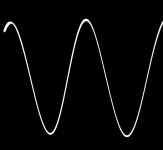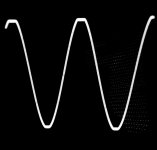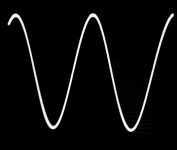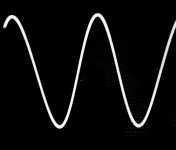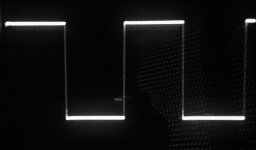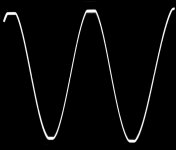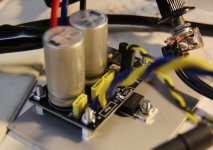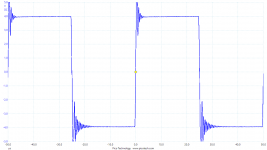Have you looked at how the amp resists at capacitive loads. ( like 10nF // 8 Ohm )
Same, higher oscillation near clipping ?
At that time I did not. I knew there was a kind of capacitive sensitivity test but I did not know how much was realistic to add at the output in parallel with the resistive load. I asked at that time on the forum but got no reply. 10nF//8 Ohm sounds fine but do you know if these are common test values?
A forum search with "capacitive load", found few threads.
In this one: Phase margin with capacitive load
I see 100nF//8ohm.
Values depends of authors and their objectives.
I think 10nF is a good value to start with, and would explore in the range 1nF 100nF.
In this one: Phase margin with capacitive load
I see 100nF//8ohm.
Values depends of authors and their objectives.
I think 10nF is a good value to start with, and would explore in the range 1nF 100nF.
Last edited:
A forum search with "capacitive load", found few threads.
In this one: Phase margin with capacitive load
I see 100nF//8ohm.
Values depends of authors and their objectives.
I think 10nF is a good value to start with, and would explore in the range 1nF 100nF.
Many thanks for the important information. I will try that test when I find time. At the time with my first LM1875 tests, I tried with better decoupling of the LM1875 supply terminals but I did not have any real luck with the peak oscillations. I could make probably fake LM1875s work around +/-29V supply and with oscillation free clipping using a 16 Ohm load. With an 8 Ohm load, oscillation started from above +/-24V supply. From that I assumed that I could get away with 10 Ohm loading per LM1875, in particular with genuine LM1875s. Perhaps it is not that simple.
I modified the component values of my test LM1875 power stage to those shown in posting #239. Then I tested it, as suggested by mchambin, with capacitors in parallel with the load. I used my on-board 10 Ohm load (not 8 Ohm) and first 10nF in parallel, then 100nF. I noticed pretty little changes with the capacitors. My output sine-wave peaks also become "woolly" very near to clipping. Below clipping the sine-wave is correct.
1KHz signal. +/- 24V supply.
Picture 1: 10nF in parallel, just before clipping.
Picture 2: 10nF in parallel, starting clipping.
Picture 3: 10nF in parallel, square-wave 20Vpp.
Picture 4: 100nF in parallel, just before clipping.
Picture 5: 100nF in parallel, beginning of clipping.
Picture 6: 100nF in parallel, square-wave 20Vpp.
Picture 7: No parallel capacitor, Thiele network inserted and clipping.
The picture quality is pretty poor such that you do not see fine details. Sorry!
The Thiele network was 2.2uH in parallel with 10 Ohm.
1KHz signal. +/- 24V supply.
Picture 1: 10nF in parallel, just before clipping.
Picture 2: 10nF in parallel, starting clipping.
Picture 3: 10nF in parallel, square-wave 20Vpp.
Picture 4: 100nF in parallel, just before clipping.
Picture 5: 100nF in parallel, beginning of clipping.
Picture 6: 100nF in parallel, square-wave 20Vpp.
Picture 7: No parallel capacitor, Thiele network inserted and clipping.
The picture quality is pretty poor such that you do not see fine details. Sorry!
The Thiele network was 2.2uH in parallel with 10 Ohm.
Attachments
Last edited:
Have you looked at how the amp resists at capacitive loads. ( like 10nF // 8 Ohm )
Same, higher oscillation near clipping ?
yes we did - FF helped me.look here and check all links inside this post: #249
https://www.diyaudio.com/forums/chi...ation-composite-amplifier-25.html#post6049355
chris
Looking pretty good, FF! Almost too good to be true... Try to add 1uF and see if that makes a difference for the square wave. You won't see much on the sine wave, except for some spurious oscillations (and of course heavy oscillations when the capacitance is much too high).
Hi,
basically I do not care for A/B amps that much, as they are a thing of the past and can not meet energy standards of the EU any more. Anyway, the are much more educational as D-amps, where things are much to complex to understand in deep.
I have measured my audio stuff with a device from the nineties, which has been updated a few times, but now need a new interface, including an amp. Because D-amps don´t do good for measuring loudspeakers, I searched for a good A/B amp with high quality, reliability and safety, because shortcuts are common while designing passive x-over´s.
Because of this problem I have bothered with comparable A/B chip amps a bit, which is theme of this thread. Even as my final pick is the LM3886, because I need higher current capability, problems seem to be identical.
First, there is the fake chip issue. Your approach is to take the fake as a standard. That is really clever, as it might be hard to get any real ones at all. The only distributors of real TI LM1875 chips charge about 2.50€ a piece, while you get a complete board, inc. P&P from Chinafake Inc. for less than 2$.
With the LM3886 there seems to be an easy test to find a real one: Just short the output while running some sinus signal into a resistor. The fake one will be dead, the real TI chip does not care.
Did anyone do this test with "your" LM1875? As far as I have read, the current limiter seems to work in some of your builds, which is not the case with the fake 3886.
As this part of the chips seems to be a problem in constructing fake China chips, I would like to share my ideas with you, as it might help.
I have reading many pages here and one point seems to be a bit mysterious.
As some of you have oscillations others do not have, maybe you are using totally different chips in the same development? Maybe more than one fake design?
Do you see the problem of such a project, where different people share a construction, when you are not using the same central part?
If different chips do use different current limiter´s, the oscillations that one amp has near clipping, may not be there with another. So same board and parts may give different results. Also, a wrong designed limiter might not set in at the right current?
I build my first "Hybrid Amp" more than 45 years ago. These and the later chip amps have usually all worked well and showed remarkable high tolerance to the build quality and parts used. Basically you can build them from anything you find in the parts bin that roughly matches the values of the reverence design and they will sound and work fine. On the other hand, you can never get a "better" sound out of these chips than the die is made for. (Don´t ask me about "high end builds" with these chips, this is religious stuff for believers, not something technical.)
So if you use premium parts, well thought out layout and pay attention to finest details, why should you have different results and serious problems, if you use the same chip?
Maybe you should have more focus on the chip you use than on values of external parts.
If you have a look at the data sheets of many different amp-chips, you will find huge similarities in the layout and parts used in the reverence / basic schematic´s.
Some data sheets even have nice "what if" lists. See page 4 of the "UTC_TDA2050".
http://www.unisonic.com.tw/datasheet/TDA2050.pdf
These rules usually apply to all amps of this kind.
If changing the values of responsible parts does not change anything, maybe you are working on the wrong side?
I know you started this thread as some kind of tutorial for beginners.
If now, some of you have gotten the idea of building a real, high quality, high power amp from the LM1875, maybe better have a look at the ready available PCB´s for the LM3884. You get nice, working designs, which use 3/6 chips in parallel/ BTL for a few $.
These already deal with the offset problem you have not touched yet. If you parallel chips, the tolerances work against each other, if one shows offset at the output.
There are passive solutions with pot´s and active, with servo OP-amps on these PCB´s.
Such a build will really be able to become a world class amp.
Do not think these are finished amps, you still have to solve many small problems around such a build, so this could be a nice follow up to a successful 1875 build.
If you really start such a project, buying "real" TI chips will not break the bank, as they are just a very small part of the bill.
basically I do not care for A/B amps that much, as they are a thing of the past and can not meet energy standards of the EU any more. Anyway, the are much more educational as D-amps, where things are much to complex to understand in deep.
I have measured my audio stuff with a device from the nineties, which has been updated a few times, but now need a new interface, including an amp. Because D-amps don´t do good for measuring loudspeakers, I searched for a good A/B amp with high quality, reliability and safety, because shortcuts are common while designing passive x-over´s.
Because of this problem I have bothered with comparable A/B chip amps a bit, which is theme of this thread. Even as my final pick is the LM3886, because I need higher current capability, problems seem to be identical.
First, there is the fake chip issue. Your approach is to take the fake as a standard. That is really clever, as it might be hard to get any real ones at all. The only distributors of real TI LM1875 chips charge about 2.50€ a piece, while you get a complete board, inc. P&P from Chinafake Inc. for less than 2$.
With the LM3886 there seems to be an easy test to find a real one: Just short the output while running some sinus signal into a resistor. The fake one will be dead, the real TI chip does not care.
Did anyone do this test with "your" LM1875? As far as I have read, the current limiter seems to work in some of your builds, which is not the case with the fake 3886.
As this part of the chips seems to be a problem in constructing fake China chips, I would like to share my ideas with you, as it might help.
I have reading many pages here and one point seems to be a bit mysterious.
As some of you have oscillations others do not have, maybe you are using totally different chips in the same development? Maybe more than one fake design?
Do you see the problem of such a project, where different people share a construction, when you are not using the same central part?
If different chips do use different current limiter´s, the oscillations that one amp has near clipping, may not be there with another. So same board and parts may give different results. Also, a wrong designed limiter might not set in at the right current?
I build my first "Hybrid Amp" more than 45 years ago. These and the later chip amps have usually all worked well and showed remarkable high tolerance to the build quality and parts used. Basically you can build them from anything you find in the parts bin that roughly matches the values of the reverence design and they will sound and work fine. On the other hand, you can never get a "better" sound out of these chips than the die is made for. (Don´t ask me about "high end builds" with these chips, this is religious stuff for believers, not something technical.)
So if you use premium parts, well thought out layout and pay attention to finest details, why should you have different results and serious problems, if you use the same chip?
Maybe you should have more focus on the chip you use than on values of external parts.
If you have a look at the data sheets of many different amp-chips, you will find huge similarities in the layout and parts used in the reverence / basic schematic´s.
Some data sheets even have nice "what if" lists. See page 4 of the "UTC_TDA2050".
http://www.unisonic.com.tw/datasheet/TDA2050.pdf
These rules usually apply to all amps of this kind.
If changing the values of responsible parts does not change anything, maybe you are working on the wrong side?
I know you started this thread as some kind of tutorial for beginners.
If now, some of you have gotten the idea of building a real, high quality, high power amp from the LM1875, maybe better have a look at the ready available PCB´s for the LM3884. You get nice, working designs, which use 3/6 chips in parallel/ BTL for a few $.
These already deal with the offset problem you have not touched yet. If you parallel chips, the tolerances work against each other, if one shows offset at the output.
There are passive solutions with pot´s and active, with servo OP-amps on these PCB´s.
Such a build will really be able to become a world class amp.
Do not think these are finished amps, you still have to solve many small problems around such a build, so this could be a nice follow up to a successful 1875 build.
If you really start such a project, buying "real" TI chips will not break the bank, as they are just a very small part of the bill.
Last edited:
Here is some read, if you want to dive into parallel/bridging stuff:
http://www.codemsys.com/eb/overture2.pdf
http://www.codemsys.com/eb/overture2.pdf
Welcome here Turbowatch 2!
anybody is welcome here... feel freeto inform us about your ideas for the LM1875. the ignition was this thread:
eBay mono LM1875 kit
chris
anybody is welcome here... feel freeto inform us about your ideas for the LM1875. the ignition was this thread:
eBay mono LM1875 kit
chris
Looking pretty good, FF! Almost too good to be true... Try to add 1uF and see if that makes a difference for the square wave. You won't see much on the sine wave, except for some spurious oscillations (and of course heavy oscillations when the capacitance is much too high).
I agree, seems too good to be true. The LM1875 is fake but does not oscillate when the datasheet indicates it should. Normal output offset. Is pretty unimpressed with capacitive loading.
It feels like receiving a letter from the tax department informing you that you will have money returned from last years taxation. Am I dreaming or awake?
I had prepared the 1uF but exceptionally much rain made my attention elsewhere necessary. Tomorrow.
I do not understand the Chinese fake mentality.
In Eastern Germany (RIP) we had the VEB Robotron (RIP too). They supplied all kinds of electronics to the whole eastern block. At that time it was a huge surprise, when they even could do the revolutionary "1MB" chip. They pretended to have world class chip developers. Later, after the GDR had collapsed, the truth was discovered: They could not develop chips, but had the worlds most sophisticated flat grinding technology. They took western chips and ground off micrometer by micrometer, then photographed the open circuits and copied it.
These where really tiny structures and it was decades ago.
Why can´t the Chinese do just the same and copy the complete chip layout of these (relative) huge designs? Why do they take away such important parts as current limiter, shortcut protection, thermal shut down? If you build such a chip in idustrial scale, it can´t be any extra cost to make a complete copy?
Maybe in most cases such long live assurances are not needed, as they put them only into cheap noise making junk ware that acoustically pollutes Asia.
This constant copy, lie and betray game is so stupid. A few years ago a "fake electronic part" was something like a sensation, today it is a sensation if anyone sells you the real product.
Maybe you could exchange good high res pictures of your individual amp-chips? So you can compare? Might explain differences?
In Eastern Germany (RIP) we had the VEB Robotron (RIP too). They supplied all kinds of electronics to the whole eastern block. At that time it was a huge surprise, when they even could do the revolutionary "1MB" chip. They pretended to have world class chip developers. Later, after the GDR had collapsed, the truth was discovered: They could not develop chips, but had the worlds most sophisticated flat grinding technology. They took western chips and ground off micrometer by micrometer, then photographed the open circuits and copied it.
These where really tiny structures and it was decades ago.
Why can´t the Chinese do just the same and copy the complete chip layout of these (relative) huge designs? Why do they take away such important parts as current limiter, shortcut protection, thermal shut down? If you build such a chip in idustrial scale, it can´t be any extra cost to make a complete copy?
Maybe in most cases such long live assurances are not needed, as they put them only into cheap noise making junk ware that acoustically pollutes Asia.
This constant copy, lie and betray game is so stupid. A few years ago a "fake electronic part" was something like a sensation, today it is a sensation if anyone sells you the real product.
Maybe you could exchange good high res pictures of your individual amp-chips? So you can compare? Might explain differences?
Correct me if Im wrong but I always assumed those "fake" chips were dumped in the chinese market by the original manufacturers when they didnt meet specifications out of the manufacturing line.
It would explain the unpredictable nature of the fake chips behavior, if anything.
It would explain the unpredictable nature of the fake chips behavior, if anything.
Hi,
basically I do not care for A/B amps that much, as they are a thing of the past and can not meet energy standards of the EU any more. Anyway, the are much more educational as D-amps, where things are much to complex to understand in deep.
............................................................................
Thanks for this elaborate posting, Turbowatch2.
True, our choice of LM1875 as power stage is not due to comparison of suited candidates. Chris had already done valuable work trying to optimize LM1875 performance and had bought several more LM1875 (genuine). I had some twenty LM1875 from earlier, probably fake but apparently performing reasonably well. So, the LM1875 was an obvious choice knowing that we would not achieve the ultimate results. But, if we are successful also with fake LM1875s, it would mean that typically younger DIYers on a tight budget can join. My understanding is that as long as a fake LM1875 performs quite well, it is the OP-AMP in a composite amplifier that mainly decides the final performance. For that, also I have (presumably) genuine LM4562 (from Reichelt/DE). For lower power levels, I would consider LM1876 and for higher power LM3886. No doubt, Tom from Neurochrome did a thorough job when choosing his candidate.
The curse of genuine or false parts will continue for long. As most of the established and previously trusted brands today have a lot of their products produced by Asian sub-suppliers, we will question if such component are as good as the ones produced in the past near the official manufacturer. Only thorough comparative tests will bring an answer. With fake parts around, it will be questionable if a result in one place can be reproduced in another place or if parts that look alike are in reality different. The electronic industry’s hunt for better earnings has cost a lot of jobs in Europe and we are not at the end. The industry will call it a necessity rather than an option.
I see your logic in a situation where all participants have the same LM1875 chips such that we can assume the same operational conditions to give the same results for us all. That will only be possible if we all buy from TI directly. More of the reputed suppliers do not have LM1875 and I have my doubt if all these suppliers are certain of the straight line to TI production. As an example, Reichelt (DE) sells many old class AB chips, including TDA2050.
An alternative to all having equal ICs is a design that can perform with different LM1875s as long as they are not clearly useless such as those Preamp unfortunately got for a start.
I have not tried the output short-circuit test (yet). When I build an LM1875 test-circuit, it is normally quite compact in order to avoid oscillation and if a short-circuit test kills the chip, the IC is difficult to replace. At the end when I expect no more use of my LM1875 test circuit, I will perform the short-circuit test.
For the time being with “free trade” and even on a tight budget, new and hopefully young DYIers can take part also using cheap or recovered parts. If we in Europe accept that electronics is something we buy cheap from Asia and we need not bother, we loose our skills as well. Electronics is already and will in the future be an even more important technology. We cannot allow to drop out of that technology. For the price imbalance, our politicians need to get involved. Asia is an energetic, strategically thinking and often skilled competitor.
My own stock of components counts a mix of genuine and fake. “Fake” in the sense that I bought cheap, often from an abandoned stock. Most is genuine and from the “good old days”. I have in most cases no problem paying the prices demanded by reputed manufacturers - the problem is handling and shipping costs that often exceed the price of the goods. The European postal services have often been privatized (at least in part) and offer products that bring them earnings, not public services as in the past. Again, a job for our politicians.
I notice that also on hybrid amplifiers you have decades of knowledge. Thanks for sharing your experience with us and the link to highly relevant information from NS (today TI). I have LM3886 (genuine I hope, from Conrad DE) in my drawer for a future project.
I have for long asked friends who could afford it and wanted to buy “the best” (audio, cars, motorcycles etc) what they would then do afterward. Sit back knowing they already had the superior and settle with that? Achieving the ultimate too early can be a trap. Personal development is never a poor investment.
Last edited:
1875 + 5534
First test!
8Vpp sqr-wave 20kHz. Thats it sofar...
Compensation capacitor 10pF at 5534, no other compensation.
Voltage gain 31x. Of which 1875 was at 2,2x.
As can be seen, ringing but no oscillation. Sinewave is of course clean.
Will do more tests tomorrow. THD, measured with the scope, was 0.001%, which is the bottom limit of it. Need to measure it with something else... My soundcard can do 0.0005%...
Lets see tomorrow...
One observation, 1Mega ohm is too high input impedance.
First test!
8Vpp sqr-wave 20kHz. Thats it sofar...
Compensation capacitor 10pF at 5534, no other compensation.
Voltage gain 31x. Of which 1875 was at 2,2x.
As can be seen, ringing but no oscillation. Sinewave is of course clean.
Will do more tests tomorrow. THD, measured with the scope, was 0.001%, which is the bottom limit of it. Need to measure it with something else... My soundcard can do 0.0005%...
Lets see tomorrow...
One observation, 1Mega ohm is too high input impedance.
Attachments
Hi
According to the oscillating issue i tried to use the same paralleling board with different supply voltage. sorry i do not make a scope pic - so you have to trust me
me thinking is that the oscillating is "just" before the clipping event therefore i try to find a "relation" between supply voltage and the point when the oscillating is starting.
Here are my results: (supply with Rigol DP832)
+/- 18V supply - input 1kHz 440mVrms - output 9,22Vrms/27,1Vpp
supply - Vpp = "loss" --> 36 - 27,1 = 8,9V (24,72%)
+/- 20V supply - input 1kHz 490mVrms - output 10,2Vrms/29,9Vpp
supply - Vpp = "loss" --> 40 - 29,9 = 10,1V (25,25%)
+/- 25V supply - input 1kHz 590mVrms - output 12,3Vrms/36,1Vpp
supply - Vpp = "loss" --> 50 - 36,1 = 13,9V (27,8%)
+/- 28V supply - input 1kHz 6300mVrms - output 13,2Vrms/39Vpp
supply - Vpp = "loss" --> 56 - 39 = 17V (30,35%)
What do you think??. I remember on rabbitz recommendation to use the LM1875 just with 1%AC --> 21VDC..22VDC
chris
According to the oscillating issue i tried to use the same paralleling board with different supply voltage. sorry i do not make a scope pic - so you have to trust me
me thinking is that the oscillating is "just" before the clipping event therefore i try to find a "relation" between supply voltage and the point when the oscillating is starting.
Here are my results: (supply with Rigol DP832)
+/- 18V supply - input 1kHz 440mVrms - output 9,22Vrms/27,1Vpp
supply - Vpp = "loss" --> 36 - 27,1 = 8,9V (24,72%)
+/- 20V supply - input 1kHz 490mVrms - output 10,2Vrms/29,9Vpp
supply - Vpp = "loss" --> 40 - 29,9 = 10,1V (25,25%)
+/- 25V supply - input 1kHz 590mVrms - output 12,3Vrms/36,1Vpp
supply - Vpp = "loss" --> 50 - 36,1 = 13,9V (27,8%)
+/- 28V supply - input 1kHz 6300mVrms - output 13,2Vrms/39Vpp
supply - Vpp = "loss" --> 56 - 39 = 17V (30,35%)
What do you think??. I remember on rabbitz recommendation to use the LM1875 just with 1%AC --> 21VDC..22VDC
chris
Correct me if Im wrong but I always assumed those "fake" chips were dumped in the chinese market by the original manufacturers when they didnt meet specifications out of the manufacturing line.
It would explain the unpredictable nature of the fake chips behavior, if anything.
Unlikely a these are Dumped chips.
No reputable maker would be stupid enough to offload failed production.
Rascals en Chine simply copy 'parts' of reverse engineered chips.
Less to mfg is simply cheaper.. in an environment where fractions of a cent matter.
Far Beyond the Faked Electronics annoyances....
Pharmaceuticals are also being faked.. in global quantities.
Currently surfacing in Hospitals.. Now That's seriously concerning.
- Home
- Amplifiers
- Chip Amps
- LM1875 in parallel configuration and used in a composite amplifier.
